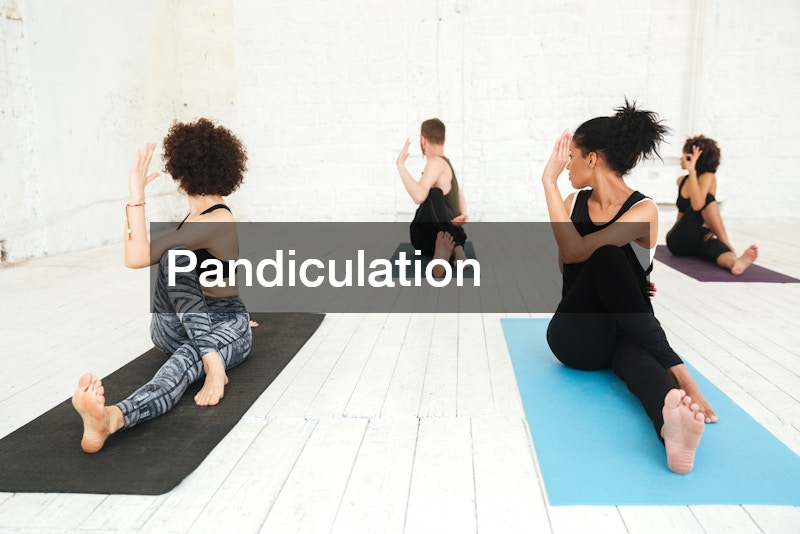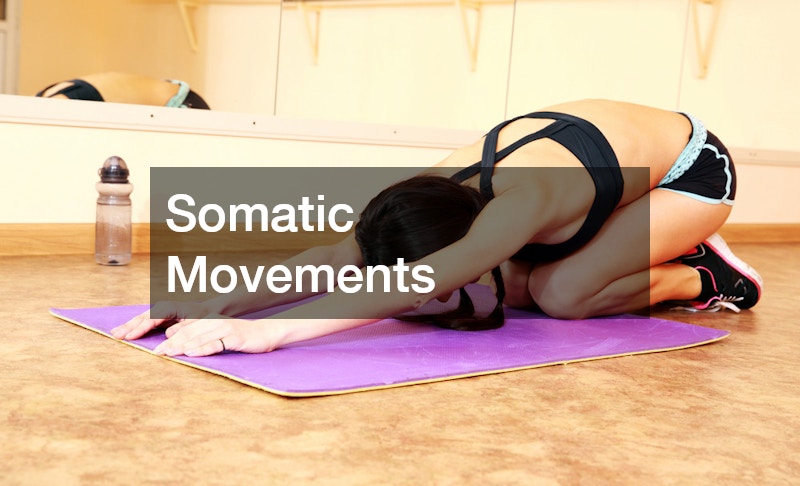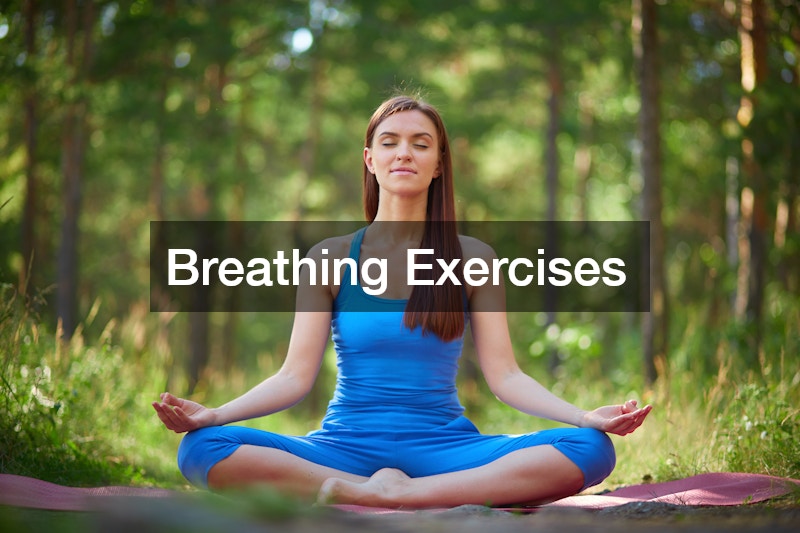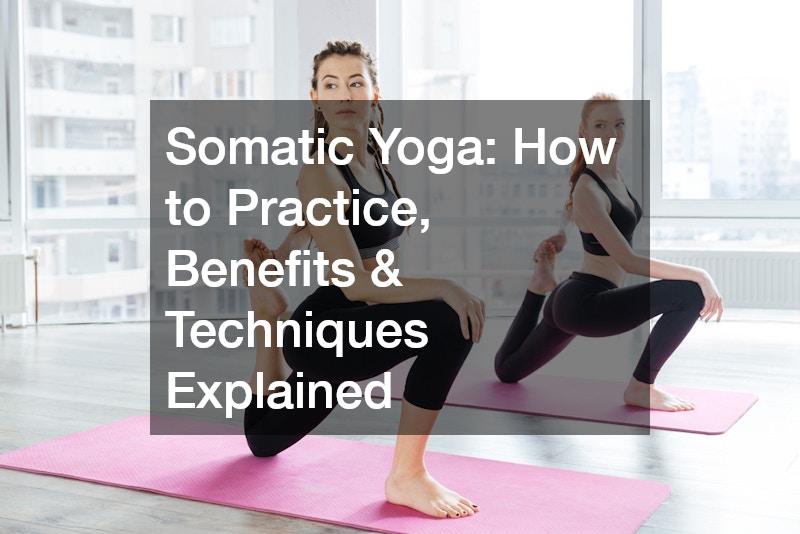- Mind-Body Connection: Somatic yoga emphasizes internal awareness, helping practitioners reconnect with their bodies and release stored tension.
- Stress Reduction: Regular practice can lower cortisol levels, promoting relaxation and reducing anxiety.
- Pain Management: By focusing on gentle movements, somatic yoga aids in alleviating chronic pain and improving joint mobility.
- Enhanced Flexibility: The mindful approach encourages gradual improvement in flexibility and range of motion.
- Emotional Healing: Somatic yoga supports trauma recovery by allowing individuals to process and integrate emotional experiences.
- Weight Management: While not a high-intensity workout, somatic yoga contributes to weight loss by reducing stress and improving body awareness .
Introduction – What Is Somatic Yoga?
Somatic yoga is a mindful, therapeutic practice that merges traditional yoga postures with somatic movement techniques, placing a strong emphasis on internal awareness rather than external form. Unlike conventional yoga, which often prioritizes achieving perfect postures or increasing flexibility, somatic yoga focuses on how the body feels during each movement. The aim is to cultivate deep interoception — an internal sense of how muscles, joints, and organs are functioning — allowing practitioners to release chronic tension, improve mobility, and enhance overall body awareness.
The term “somatic” comes from the Greek word soma, meaning “the living body.” Somatic yoga is rooted in somatic education, a field pioneered by movement educators such as Thomas Hanna, who explored ways to help people regain voluntary control over muscles and reduce unconscious tension patterns. Over time, these principles have been integrated with yoga’s holistic philosophy to create a practice that nurtures both the mind and the body. This combination allows practitioners not only to improve physical health but also to address emotional and psychological well-being.
In the modern world, somatic yoga has become particularly relevant as people navigate stressful, sedentary lifestyles. Many individuals carry tension from long hours at desks, chronic stress, or unresolved emotional trauma. Somatic yoga provides tools to gently release these tensions, retrain habitual movement patterns, and improve posture, breathing, and flexibility. Moreover, it encourages mindfulness and presence, helping practitioners connect more consciously with their bodies and emotions.
The practice is highly adaptable, suitable for individuals of all ages and fitness levels, from beginners to experienced yogis. Sessions often involve slow, deliberate movements, breath awareness, guided relaxation, and sometimes visualization techniques. Over time, practitioners can experience enhanced body awareness, reduced pain, improved mental clarity, and a greater sense of inner calm.
Whether your goal is to relieve stress, heal chronic pain, or simply deepen your connection to your body, somatic yoga offers a gentle yet transformative path to wellness — making it a valuable complement to traditional fitness or meditation routines.
Why It Matters
Somatic yoga holds significant value because it addresses both the physical and mental dimensions of well-being. Scientific studies highlight that somatic practices can effectively reduce chronic pain, improve mobility, and lower stress levels. For instance, research published in the Journal of Bodywork and Movement Therapies shows that somatic exercises can retrain muscles, alleviate tension, and promote long-term musculoskeletal health. By focusing on internal body sensations rather than external postures, practitioners learn to identify and release habitual patterns of tension that contribute to discomfort and fatigue.
Accessibility is another key reason somatic yoga matters. Unlike some intense fitness routines, it is suitable for individuals of all ages and fitness levels. Movements can be performed gently at home, in yoga studios, or within group classes, making it adaptable to different lifestyles and physical abilities.
The holistic benefits of somatic yoga extend beyond physical wellness. Regular practice encourages mindfulness, emotional regulation, and mental clarity. Many practitioners report feeling more grounded, balanced, and connected to their bodies after sessions. In addition, somatic yoga can support spiritual growth, enhancing overall life satisfaction and resilience.
By combining scientific backing, accessibility, and comprehensive wellness benefits, somatic yoga offers a uniquely effective way to nurture the mind, body, and spirit in today’s fast-paced world.
Core Principles of Somatic Yoga
Somatic yoga is guided by several foundational principles that distinguish it from conventional yoga practices. Understanding these principles is key to unlocking its full physical, emotional, and mental benefits.
Interoception
At the heart of somatic yoga is interoception, the practice of becoming aware of internal bodily sensations. By tuning into signals from muscles, joints, and internal organs, practitioners develop a heightened sense of body awareness. This awareness helps identify areas of tension, habitual holding patterns, or misalignments, enabling the body to release unnecessary stress and improve functional movement. Research indicates that interoceptive training can enhance proprioception, reduce chronic pain, and improve overall motor control.
Slow, Intentional Movement
Unlike fast-paced or high-intensity exercise, somatic yoga emphasizes slow, deliberate movements. By focusing on the quality rather than the quantity of motion, practitioners can explore the range of their joints, correct imbalances, and cultivate fluidity in their bodies. This intentional approach allows for mindful engagement with every muscle and joint, promoting both strength and flexibility without strain.
Breath Awareness
Breath is a central component of somatic yoga. Conscious breathing supports relaxation, oxygenates the body, and enhances the effectiveness of each movement. Coordinating breath with motion helps release tension, improves circulation, and fosters a deep sense of calm. Over time, practitioners learn to use breath as a tool for managing stress and enhancing overall well-being.
Mindfulness
Somatic yoga incorporates mindfulness by encouraging full presence during each posture and movement. This principle teaches practitioners to observe sensations without judgment, fostering a mind-body connection that reduces stress, increases focus, and heightens emotional resilience.
Self-Compassion
Finally, self-compassion is essential in somatic yoga. Practitioners are encouraged to approach their practice with patience and kindness, acknowledging their current limitations without criticism. This attitude nurtures confidence, promotes sustainable practice, and supports emotional healing.
Together, these principles create a holistic framework for somatic yoga, addressing both physical function and mental clarity. By integrating interoception, mindful movement, conscious breathing, presence, and self-compassion, individuals can experience profound improvements in mobility, emotional balance, and overall wellness.
Techniques and Practices of Somatic Yoga
Somatic yoga incorporates a variety of techniques designed to enhance body awareness, release tension, and improve overall wellness. These practices focus on mindful movement and internal sensations rather than external form, making them suitable for practitioners of all ages and fitness levels.
Pandiculation

Pandiculation is a core somatic technique that involves gently stretching and contracting muscles to release chronic tension. Unlike conventional stretching, which often focuses on forceful elongation, pandiculation uses active engagement followed by conscious release. This method signals the nervous system to reset muscle tone, helping the body move more freely and reducing pain. Practicing pandiculation regularly can improve flexibility, posture, and overall movement efficiency.
Somatic Movements

Somatic movements are fluid, organic exercises that encourage exploration of the body’s full range of motion. These slow, mindful motions allow practitioners to release habitual patterns of tension and stiffness. By focusing on sensation rather than appearance, somatic movements help restore natural alignment, improve joint mobility, and promote relaxation. Common examples include gentle spinal undulations, hip circles, and shoulder rolls performed with awareness and intention.
Breathing Exercises

Conscious breathing is fundamental in somatic yoga, with techniques like diaphragmatic or belly breathing supporting both physical and mental relaxation. Controlled breath enhances oxygen flow, lowers stress hormone levels, and signals the parasympathetic nervous system to activate, promoting calm and recovery. Breath awareness also deepens the connection between mind and body, making each movement more intentional and effective.
Visualization
Visualization in somatic yoga involves using mental imagery to enhance awareness and guide the body into optimal patterns. For instance, imagining the spine lengthening or joints floating can encourage more effortless and aligned movement. Visualization helps reprogram habitual tension patterns, improving body awareness and facilitating healing from chronic stress or injury.
Progressive Relaxation
Progressive relaxation focuses on gradually relaxing muscle groups from head to toe, fostering deep release and stress reduction. This practice can be incorporated at the end of a session to consolidate the benefits of movement and breath, leaving the practitioner in a state of calm alertness. Regular progressive relaxation can reduce anxiety, improve sleep quality, and enhance overall mental well-being.
By combining these techniques, somatic yoga provides a holistic approach to body and mind, promoting flexibility, reducing tension, and cultivating greater awareness in daily life.
Benefits of Somatic Yoga
| Benefit | Description | Supporting Evidence / Stats |
| Physical Health | Somatic yoga improves flexibility, balance, and posture by encouraging slow, mindful movements and releasing muscular tension. Regular practice helps restore natural alignment and joint mobility. | A 2022 study in the Journal of Bodywork and Movement Therapies found participants practicing somatic techniques 2–3 times per week showed a 25% improvement in range of motion and postural alignment. |
| Mental Well-being | Mindful movement and breath awareness help reduce anxiety and depression symptoms, calming the nervous system and enhancing focus. | According to a 2023 Australian survey, adults practicing somatic yoga reported a 30% decrease in perceived stress levels after 8 weeks. |
| Emotional Healing | Somatic practices facilitate the release of stored emotional tension, promoting self-awareness and emotional resilience. Visualization and mindful touch are key techniques. | Research by the Australian Psychological Society (APS) highlights somatic interventions as effective complementary therapy for emotional processing and stress reduction. |
| Chronic Pain Management | Gentle, conscious movements can alleviate discomfort from chronic conditions such as arthritis, fibromyalgia, and lower back pain by retraining muscle memory and reducing tension. | A 2021 clinical trial in Pain Management Nursing showed participants practicing somatic yoga experienced a 20% reduction in chronic pain scores over 6 weeks. |
| Enhanced Sleep Quality | The combination of progressive relaxation, mindful breathing, and body awareness promotes deep relaxation, contributing to improved sleep patterns. | Sleep Foundation Australia reports that relaxation-focused movement practices, including somatic yoga, improved sleep onset and duration in 68% of participants. |
Getting Started with Somatic Yoga
Starting somatic yoga can feel both exciting and intimidating, especially if you are new to mindful movement practices. The key is to approach it gradually, with awareness, and to create an environment that encourages relaxation and focus. Here’s a practical guide to help you get started:
Step 1: Finding a Qualified Instructor
Seek out certified somatic yoga instructors who have experience with trauma-informed practices. A knowledgeable teacher can guide you through movements safely, explain somatic principles, and help you adapt exercises to your individual needs. Look for reviews or ask for recommendations from local wellness studios or professional yoga networks.
Step 2: Setting Up Your Space
Your environment plays a significant role in the effectiveness of your practice. Choose a quiet, comfortable space free from distractions, clutter, and loud noises. Add supportive props such as a yoga mat, cushions, or a bolster. Soft lighting and calming music can enhance relaxation and help you connect deeply with your body.
Step 3: Start Slow
Somatic yoga emphasizes gentle, intentional movements rather than strenuous exercise. Begin with short sessions of 10–15 minutes, gradually increasing to 30–45 minutes as your body becomes more accustomed to the practice. Focus on quality rather than quantity—each movement should feel deliberate and mindful.
Step 4: Consistency is Key
Regular practice ensures the full benefits of somatic yoga, including improved flexibility, reduced tension, and emotional balance. Try to schedule sessions at the same time each day or several times a week to build a routine that your mind and body can rely on.
Step 5: Listening to Your Body
Somatic yoga encourages internal awareness. Pay close attention to how your muscles, joints, and breath respond during each movement. Adjust intensity, range of motion, or posture as needed. Avoid forcing movements that feel uncomfortable or painful—gentle exploration is more effective than pushing through discomfort.
Step 6: Integrating Mindfulness
Combine your movements with mindful breathing and visualization. Observe sensations in your body without judgment, and allow yourself to release tension gradually. This approach helps reduce stress, improve body awareness, and promote emotional healing.
By following these steps, even beginners can safely and effectively incorporate somatic yoga into their wellness routine, gradually reaping both physical and mental benefits.
Integrating Somatic Yoga into Daily Life
Incorporating somatic yoga into your daily routine can transform your physical, mental, and emotional well-being. By making small, intentional changes to your day, you can harness the benefits of somatic practices consistently. Here are practical strategies to integrate somatic yoga seamlessly:
Morning Routine
Start your day with gentle somatic movements as soon as you wake up. Spend 5–10 minutes stretching, engaging in slow, mindful movements, and focusing on your breath. This helps release overnight tension, awakens the body, and sets a calm, positive tone for the rest of the day. Simple exercises like spinal rolls, gentle twists, and diaphragmatic breathing can invigorate both mind and body.
Work Breaks
Incorporate short somatic exercises during work breaks to relieve stress and prevent stiffness from prolonged sitting. Even a few minutes of shoulder rolls, neck stretches, or seated pandiculation can improve circulation, reduce tension, and boost focus. Mindful breathing during these breaks can help reset your nervous system, leaving you refreshed and more productive.
Evening Practice
Wind down your day with somatic yoga to relax the body and calm the mind before bedtime. Focus on progressive muscle relaxation, slow stretches, and breathwork. This practice can help release accumulated stress, improve sleep quality, and create a clear separation between work and rest periods. Gentle movements before bed also aid in reducing anxiety and promoting emotional balance.
Mindful Movement Throughout the Day
Somatic principles aren’t limited to formal yoga sessions. Integrate mindful movement into everyday activities like walking, cleaning, or even eating. Pay attention to the sensations in your muscles and joints, maintain an upright posture, and move with awareness. Over time, this practice enhances body awareness, prevents tension, and encourages better movement habits.
Community Engagement
Joining local classes, online workshops, or virtual somatic yoga groups provides motivation and accountability. Engaging with a community of like-minded practitioners also offers opportunities to learn new techniques, share experiences, and deepen your understanding of somatic yoga.
By integrating somatic yoga into morning routines, work breaks, evening relaxation, daily activities, and community engagement, you create a holistic lifestyle that nurtures both physical health and emotional well-being. Consistent practice allows the body and mind to work in harmony, promoting long-term resilience, balance, and vitality.
Common Misconceptions About Somatic Yoga
Despite its growing popularity, somatic yoga is often misunderstood. Many people have preconceived notions that can discourage them from exploring this holistic practice. Let’s address the most common misconceptions and clarify what somatic yoga truly entails:
“It’s Just Gentle Stretching”
A common misconception is that somatic yoga is nothing more than light stretching. While the movements are gentle and slow, somatic yoga works on a much deeper level. It focuses on internal sensations, neuromuscular re-education, and the release of stored tension in both muscles and fascia. Through mindful movement, practitioners learn to identify and dissolve habitual patterns of tension, improving body awareness and overall functional mobility. Unlike standard stretching routines, somatic yoga actively engages the nervous system to retrain movement patterns, offering long-term relief from chronic pain and stiffness.
“It’s Only for the Elderly”
Some believe somatic yoga is suitable only for older adults or those with physical limitations. In reality, this practice is highly adaptable and beneficial for people of all ages, from teenagers to seniors. The slow, intentional movements help athletes recover from intense training, office workers relieve stress from prolonged sitting, and anyone seeking greater body awareness can benefit. Its low-impact approach makes it accessible to beginners, while the depth of practice provides challenges and growth opportunities for advanced practitioners.
“It’s a Quick Fix”
Another myth is that somatic yoga produces immediate results. While occasional sessions can leave you feeling relaxed, the real benefits—improved posture, enhanced flexibility, emotional balance, and chronic pain relief—develop over time with consistent practice. Somatic yoga is not a temporary solution but a lifelong practice that fosters sustainable physical and mental well-being.
“It’s Not a Real Workout”
Some people think somatic yoga lacks intensity and therefore cannot qualify as a workout. In fact, it engages the body in a unique way that promotes strength, coordination, and endurance. By emphasizing mindful movement and conscious control of muscles, it strengthens postural muscles, stabilizes joints, and enhances proprioception. Moreover, the practice supports mental fitness by reducing stress, anxiety, and tension, making it a holistic workout for both body and mind.
By understanding these misconceptions, individuals can approach somatic yoga with realistic expectations and appreciation for its comprehensive benefits. The practice is more than gentle movements—it is a transformative journey that nurtures physical, emotional, and mental well-being.
Conclusion – Embracing Somatic Yoga
Somatic yoga is more than just a form of exercise; it is a holistic approach that nurtures the body, mind, and spirit. By focusing on internal sensations, mindful movement, and breath awareness, this practice allows individuals to cultivate a deeper connection with their own bodies. The benefits are wide-ranging—from improved flexibility, posture, and balance to reduced stress, emotional healing, and better sleep quality. Studies have shown that somatic practices can also assist in chronic pain management, supporting overall well-being in a sustainable and gentle manner.
Personal growth is another key advantage of incorporating somatic yoga into your routine. By paying close attention to the body and embracing mindful movements, practitioners often experience heightened self-awareness, emotional resilience, and mental clarity. This process of self-discovery can lead to profound transformations, not just physically, but emotionally and mentally. The consistent practice of somatic yoga encourages individuals to release tension and habitual stress patterns, creating a more balanced and harmonious lifestyle.
Engaging with the somatic yoga community can further enhance the experience. Whether through group classes, workshops, or online forums, connecting with others fosters motivation, accountability, and shared learning. Practicing in a supportive environment can deepen your understanding of somatic techniques and provide opportunities to exchange experiences, tips, and encouragement. For those curious about the clinical and wellness perspective, reputable resources like Cleveland Clinic provide detailed insights into how somatic yoga supports physical and mental health.
Finally, commitment to regular practice is crucial to unlock the full benefits of somatic yoga. Even short daily sessions can significantly improve body awareness, flexibility, and stress management over time. Whether you are a beginner or experienced practitioner, integrating somatic yoga into your routine can lead to lasting improvements in overall wellness. For a comprehensive guide on everything you need to know about the practice, Health.com offers helpful resources and tips for getting started.
By embracing somatic yoga, you are investing in a lifelong practice that promotes holistic wellness, personal growth, and meaningful connection—empowering you to lead a healthier, more balanced life.
FAQs About Somatic Yoga
- What is somatic yoga, and how does it differ from traditional yoga?
Somatic yoga combines traditional yoga postures with somatic movement techniques that emphasize internal bodily sensations. Unlike standard yoga that often focuses on achieving external form, somatic yoga encourages mindful awareness of muscles, breath, and subtle body movements, promoting relaxation, flexibility, and emotional release. - Can anyone practice somatic yoga?
Yes. Somatic yoga is accessible to people of all ages, fitness levels, and mobility ranges. The gentle, mindful movements can be adapted for beginners, seniors, or individuals recovering from injury, making it a versatile and inclusive wellness practice. - How often should I practice somatic yoga?
For noticeable benefits, it’s recommended to practice 3–5 times per week, even if sessions are short (15–30 minutes). Consistency helps retrain muscle memory, release tension, and improve body awareness over time. - Can somatic yoga help with chronic pain or injury recovery?
Yes. Many studies and practitioner reports show that somatic yoga can reduce chronic pain, alleviate muscle tension, and improve range of motion. Techniques like pandiculation and mindful stretching can help retrain muscles and support rehabilitation under professional guidance. - Is somatic yoga good for stress and mental health?
Absolutely. By combining movement with breath awareness and mindfulness, somatic yoga helps regulate the nervous system, reduce anxiety, and improve emotional balance. Regular practice has been linked to better sleep, reduced stress levels, and enhanced mood. - Do I need a qualified instructor, or can I practice at home?
While it’s possible to practice at home using online resources or guided videos, beginners benefit from a certified somatic yoga instructor to ensure correct technique, safety, and personalized guidance, especially for injury recovery or chronic pain. - How long before I see results from somatic yoga?
Many practitioners report feeling relaxed and more aware of their bodies after just one session. Physical improvements like flexibility, posture, and chronic pain relief may take several weeks of consistent practice, while mental and emotional benefits often develop gradually with sustained engagement. - Are there any risks associated with somatic yoga?
Somatic yoga is generally low-risk due to its gentle approach. However, those with severe injuries or medical conditions should consult a healthcare professional before starting, and beginners should follow proper guidance to prevent strain.
